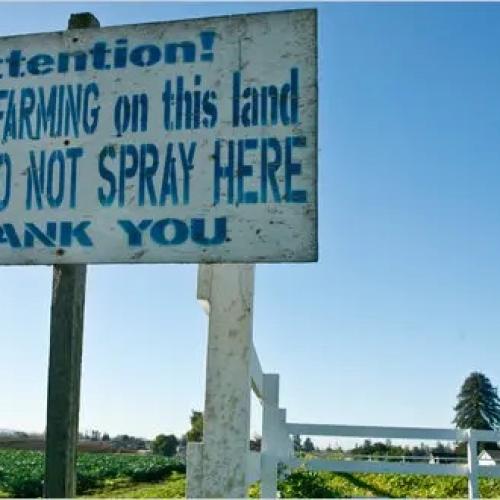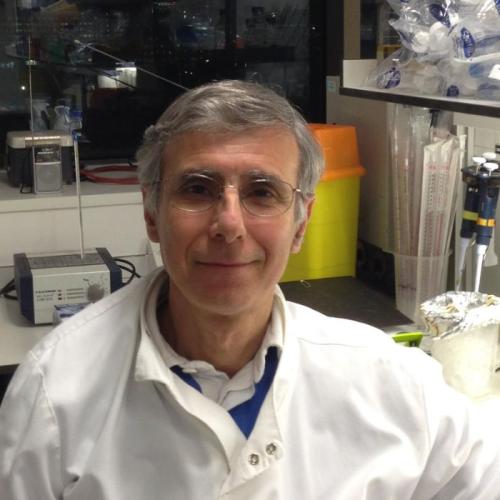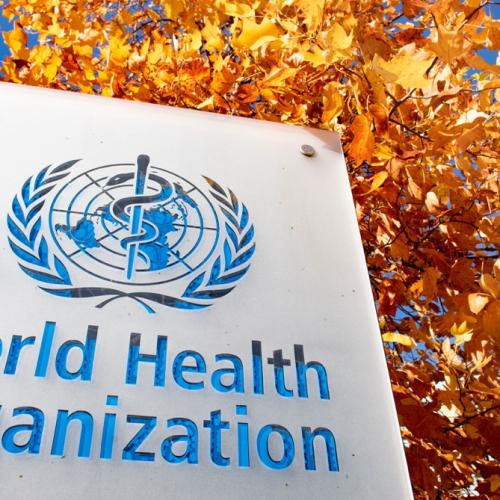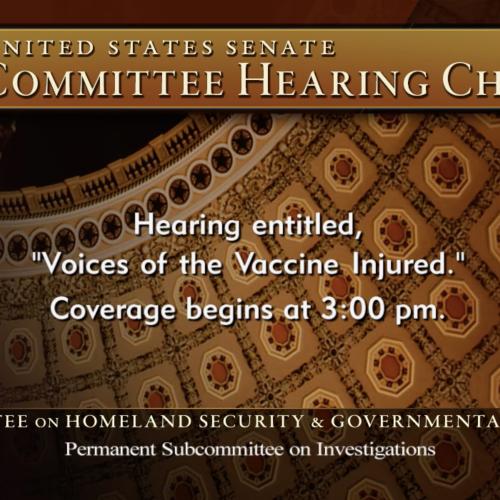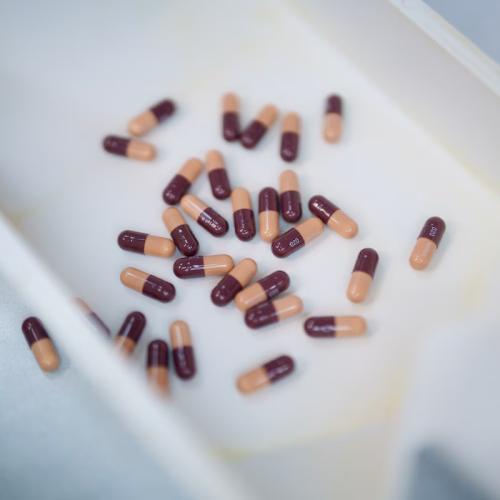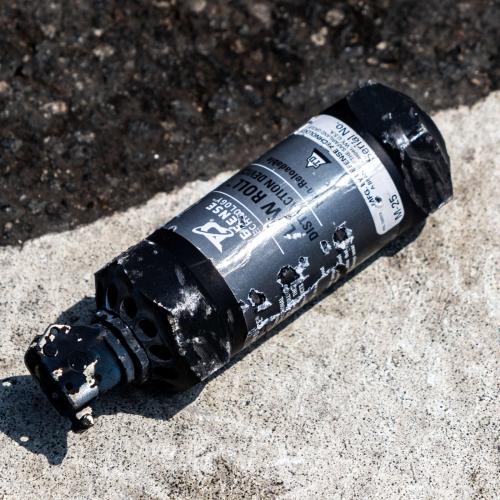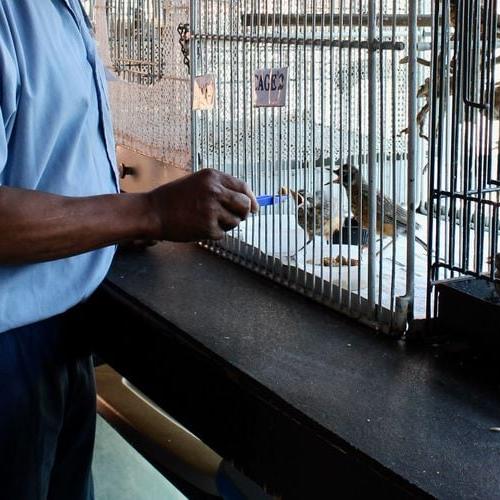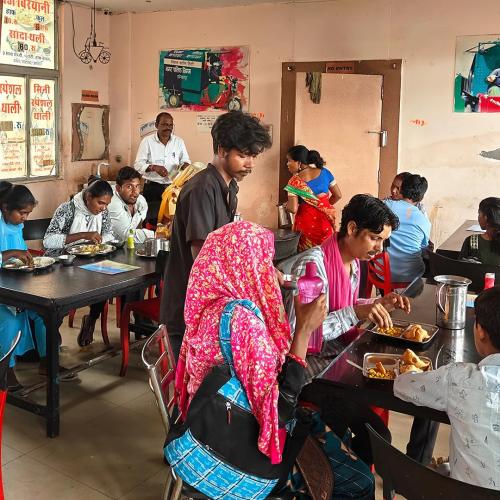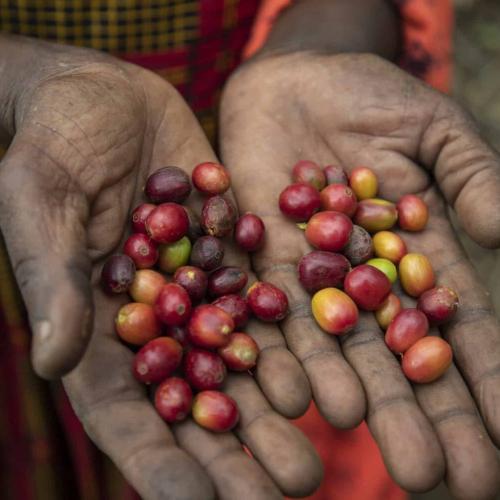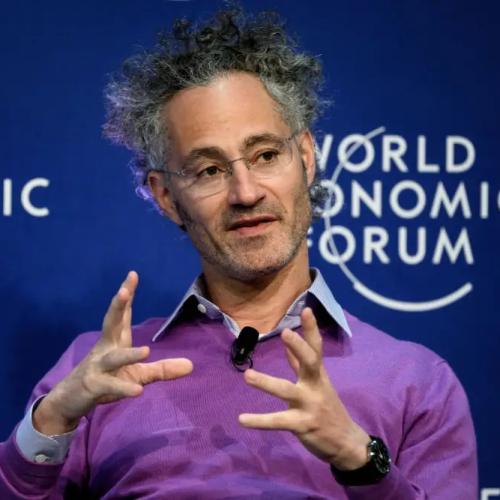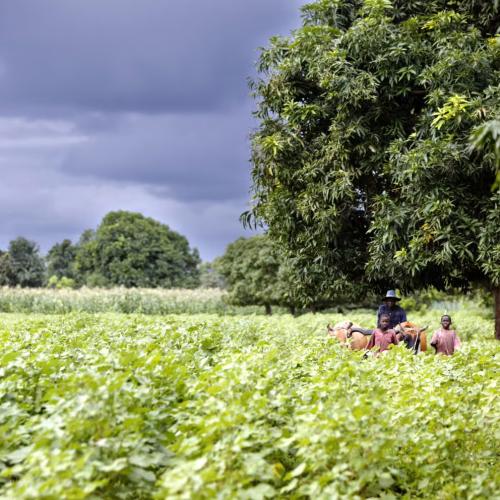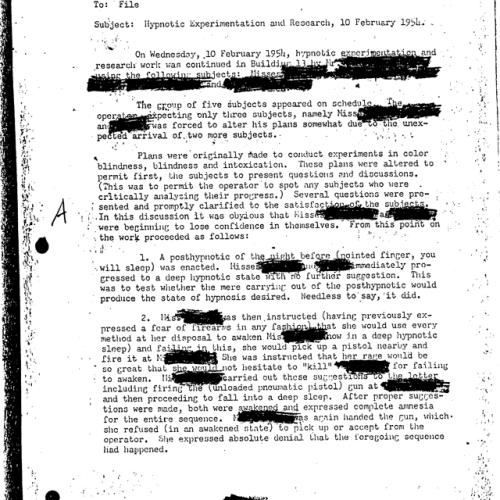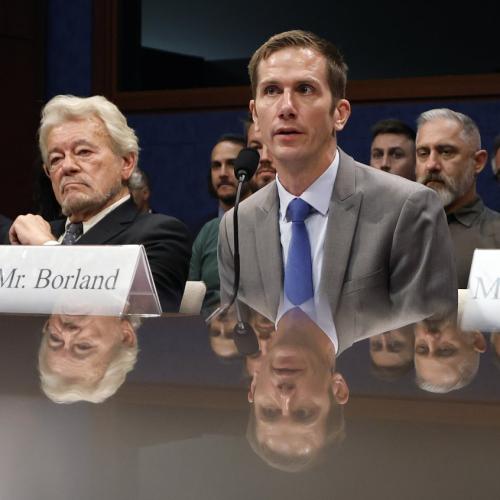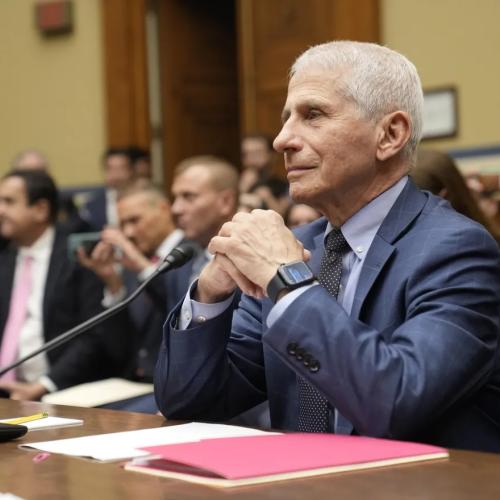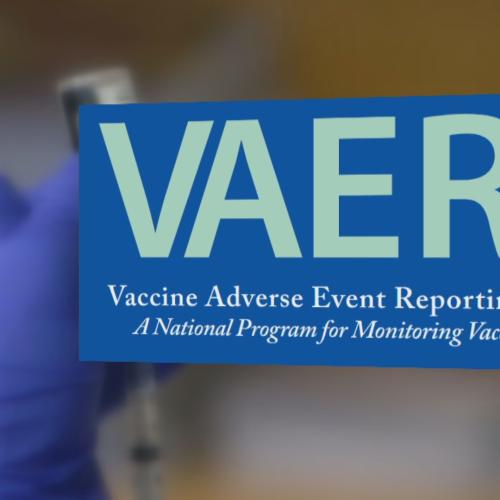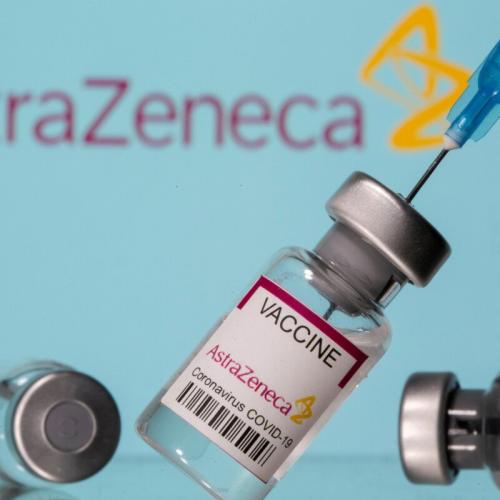Food Corruption News Stories
Below are key excerpts of revealing news articles on food system corruption from reliable news media sources. If any link fails to function, a paywall blocks full access, or the article is no longer available, try these digital tools.
For further exploration, delve into our comprehensive Health and Food Corruption Information Center.
The urban tree canopy in Denver is one of the sparsest in the country. In 2020, when Linda Appel Lipsius became executive director of the decades-old Denver Urban Gardens (DUG) network, which oversees more than 200 community vegetable gardens throughout six metro Denver counties, she wanted to continue increasing community access to fresh food—a longtime goal of the garden program. But she had another aim, too: increasing the city’s tree coverage. Appel Lipsius decided to build a system of food forests throughout the Denver area. These dense, layered plantings incorporate fruit-bearing trees with other perennials to mimic natural forests. Now, DUG oversees 26 food forests, with 600 or so fruit and nut trees and 600 berry bushes. While urban trees are recognized for their multiple benefits, including cooling and carbon drawdown, “there are not a lot of players in Denver, or even in most cities around the country, who are focused on food trees,” Appel Lipsius said. “We were able to step into this space to help build and bolster the canopy while adding food-producing perennials.” Neighbors are welcome to enter and harvest a wide assortment of fruits, nuts, and berries. Beyond providing fresh food in neighborhoods that need it most, these agroforests reduce the urban heat island effect, create pollinator habitat, and combat pollution and climate change by absorbing and filtering harmful gases.
Note: Explore more positive stories like this on healing the Earth.
There are 34 ingredients in M&Ms, and, according to Mars, the company that produces the candy, at least 30 countries – from Ivory Coast to New Zealand – are involved in supplying them. Each has its own supply chain that transforms the raw materials into ingredients – cocoa into cocoa liquor, cane into sugar, petroleum into blue food dye. The environmental impact of ultra-processed foods – like M&Ms – is less clear and is only now starting to come into focus. One reason they have been so difficult to assess is the very nature of UPFs: these industrially made foods include a huge number of ingredients and processes to put them together, making it nearly impossible to track. Since 1850, agricultural expansion has driven almost 90% of global deforestation, which has been responsible for 30% of global greenhouse gas emissions. Getting an exact measure of the environmental toll of UPFs is nearly impossible, given that, definitionally, UPFs consist of many ingredients and a high volume of opaque processes. Ingredients aren’t just mixed together like one would do to make a stew at home. Instead, these ingredients are chemically modified, some parts stripped away, and flavors, dyes or textures added in – and it’s unclear what the cost of these processes are because so many suppliers and components are involved. Another reason is that all UPFs (again, definitionally) are the creations of food companies that have little incentive to disclose their environmental footprint.
Note: For more along these lines, read our concise summaries of news articles on food system corruption and climate change.
The insecticide chlorpyrifos is a powerful tool for controlling various pests, making it one of the most widely used pesticides during the latter half of the 20th century. Like many pesticides, however, chlorpyrifos lacks precision. In addition to harming non-target insects like bees, it has also been linked to health risks for much larger animals – including us. Now, a new US study suggests those risks may begin before birth. Humans exposed to chlorpyrifos prenatally are more likely to exhibit structural brain abnormalities and reduced motor functions in childhood and adolescence. Progressively higher prenatal exposure to chlorpyrifos was associated with incrementally greater deviations in brain structure, function, and metabolism in children and teens, the researchers found, along with poorer measures of motor speed and motor programming. This supports previous research linking chlorpyrifos with impaired cognitive function and brain development, but these findings are the first evidence of widespread and long-lasting molecular, cellular, and metabolic effects in the brain. Subjects in this urban cohort were likely exposed to chlorpyrifos at home, since many were born before or shortly after the US Environmental Protection Agency banned residential use of chlorpyrifos in 2001. The pesticide is still used in agriculture around the world. "Widespread exposures ... continue to place farm workers, pregnant women, and unborn children in harm's way," says senior author Virginia Rauh.
Note: Did you know that chlorpyrifos was originally developed by Nazis during World War II for use as a nerve gas? Read more about the history and politics of chlorpyrifos, and how U.S. regulators relied on falsified data to allow its use for years.
More children around the world are obese than underweight for the first time, according to a UN report that warns ultra-processed junk food is overwhelming childhood diets. There are 188 million teenagers and school-age children with obesity – one in 10 – Unicef said, affecting health and development and bringing a risk of life-threatening diseases. Catherine Russell, executive director of the UN agency for children, said: “When we talk about malnutrition, we are no longer just talking about underweight children. “Obesity is a growing concern. Ultra-processed food [UPF] is increasingly replacing fruits, vegetables and protein at a time when nutrition plays a critical role in children’s growth, cognitive development and mental health.” While 9.2% of five to 19-year-olds worldwide are underweight, 9.4% are considered obese, the report found. In 2000, nearly 13% were underweight and just 3% were obese. Obesity has overtaken being underweight as the more prevalent form of malnutrition in all regions of the world except sub-Saharan Africa and South Asia, and is a problem even in countries with high numbers of children suffering from wasting or stunting due to a lack of food. One in five of those aged between five and 19 are overweight, with a growing proportion of those 291 million individuals falling into the obese category: 42% in 2022, up from 30% in 2000. Childhood obesity has been linked to higher risks of heart disease, type 2 diabetes and some cancers in later life.
Note: Read our latest Substack article on how the US government turns a blind eye to the corporate cartels fueling the chronic health crisis. For more along these lines, read our concise summaries of news articles on health and food system corruption.
Pesticides banned years ago in the European Union are drifting through the skies and turning up in clouds above France, raising concerns about how long these toxins persist and how far they can travel, with potentially harmful global health impacts, according to a pathbreaking new study. The research ... is the first to detect dozens of agricultural chemicals—including insecticides, herbicides, fungicides, and other substances—suspended in cloud water droplets. That means pesticides not only linger in the environment but also move through the atmosphere and fall back to Earth in rain or snow, sometimes at levels exceeding European safe drinking water limits. The study found that clouds can carry current-use pesticides, long-banned compounds, and “emerging contaminants“—industrial chemicals that either build up in the environment or form when older pesticides break down. Some even transform into new compounds in the atmosphere itself, beyond what regulators have known to consider. Researchers estimate that French skies alone may contain anywhere from a few tons to more than 100 tons of pesticides at any given time—most carried in from distant sources. Out of 446 possible chemicals screened—including pesticides, biocides (compounds that kill harmful organisms), additives, and transformation products (breakdown products of pesticides)—researchers found 32 different compounds in cloud water.
Note: Across the US, a powerful legislative push is underway to protect pesticide manufacturers from being held accountable for the harms caused by their products. Check out our latest Substack, "The Pesticide Crisis Reveals The Dark Side of Science. We Have The Solutions to Regenerate."
Despite the increasing rate of allergic diseases, both in industrialized and in developing countries, the Amish remain exceptionally — and bafflingly — resistant. Only 7 percent of Amish children had a positive response to one or more common allergens in a skin prick test, compared with more than half of the general U.S. population. Even children from other traditional farming families, who still have lower rates of allergic disease than nonfarm children, are more allergic than the Amish. “Certain kinds of farming practices, particularly the very traditional ones, have this extraordinary protective effect in the sense that, in these communities, asthma and allergies are virtually unknown,” said Donata Vercelli, a professor of cellular and molecular medicine. “The studies that have been done in these farming populations are critical because they tell us that protection is an attainable goal.” During the first year or two of life, a baby’s immune system is rapidly developing and highly malleable by environmental stimuli, such as bacteria. Some experts believe that exposing young children to certain types of beneficial bacteria can engage and shape the growing immune system in a way that reduces the risk of allergic diseases later in life. Farm dust contains a hodgepodge of bacteria shed from livestock and animal feed that isn’t harmful enough to cause illness, but does effectively train the immune system to become less responsive to allergens later in life.
Note: For more along these lines, read our concise summaries of news articles on health and food system corruption.
Professor Michael Antoniou, head of the Gene Expression and Therapy Group at King’s College London, has studied for more than 35 years how genes function and how they are disrupted. His decades of rigorous independent research into the risks of GM foods and glyphosate-based herbicides have raised serious concerns about the safety of these technologies. In a report he prepared for the Mexican government, as the country attempted to restrict GMO corn imports for health reasons, Professor Antoniou cited “a large body of evidence from well-controlled laboratory animal toxicity studies that show evidence of harm to multiple physiological systems” from toxic agents found in GM corn. The health risks of GM corn and its associated pesticides arise from three main sources: Bt insecticidal proteins engineered into the plants, DNA damage caused by the genetic modification process itself, and pesticides used on the crops. The GM transformation process – the process by which a GMO is generated in the laboratory – is highly mutagenic. You create unintended damage to the DNA of the crop. And by changing the pattern of gene function in the organism, you will change its biochemistry and its composition, including the unexpected production of new toxins and allergens. Regardless of the GMO crop we’re talking about, they’re all grown with one or more different kinds of pesticides ... such as glyphosate. They invariably come with pesticide residues
Note: For more along these lines, read our concise summaries of news articles on GMOs and toxic chemicals.
When it comes to pesticides, the Trump administration’s Make America Healthy Again, or MAHA, Commission has a serious problem: The Commission’s newly released strategy for addressing childhood chronic disease is better for the pesticide industry than for people. The US currently uses over a billion pounds of pesticides annually on our crops, about one-third of which is chemicals that have been banned in other countries. Many have been linked to serious health problems from cancer to infertility to birth defects. Those pesticides contaminate our air, our water, and our bodies. One cancer-linked pesticide, glyphosate, is now found in 80% of adults and 87% of children. [The Commission] barely mentions organic farming, despite the fact that organic is the clearest pathway to transforming our food system into one that is healthy and nontoxic. The US Department of Agriculture organic seal prohibits more than 900 synthetic pesticides allowed in conventional agriculture. Just one week on an organic diet can reduce pesticide levels in our bodies up to 95%. Synthetic food dyes—a key issue for the MAHA movement—are all prohibited by the organic seal, along with hundreds of other food additives and drugs. The Commission’s strategy ignores organic. Instead, it leans into promoting industry-friendly “precision agriculture”—the use of AI, machine learning, and digital tools on farms to optimize inputs—which primarily benefits corporate giants like Bayer.
Note: For more along these lines, read our concise summaries of news articles on government corruption and toxic chemicals.
Pesticides once appeared to be a clear target for Robert F. Kennedy Jr.’s desire to “make America healthy again.” Before becoming the health secretary, he described Monsanto, the maker of the glyphosate-based herbicide Roundup, as “enemy of every admirable American value,” and vowed to “ban the worst agricultural chemicals already banned in other countries.” Since he came to power, many of Kennedy’s fans have waited eagerly for him to do just that. Kennedy has yet to satisfy them: In the latest MAHA action plan on children’s health, released last week, pesticides appear only briefly on a laundry list of vague ideas. The plan says that the government should fund research on how farmers could use less of them, and that the government "will work to ensure that the public has awareness and confidence” in the EPA’s existing pesticide-review process, which it called “robust.” Several studies have found neurological impacts associated with pesticides. UC Davis’s MIND Institute put out a study in 2014 that found autism risk was much higher among children whose mothers had lived near agricultural-pesticide areas while pregnant. A 2017 paper found that zip codes that conducted aerial spraying for mosquitoes—a pesticide—had comparatively higher rates of autism than zip codes that didn’t. Others have linked pesticides to a range of behavioral and cognitive impairment in children.
Note: For more along these lines, read our concise summaries of news articles on government corruption and toxic chemicals.
Children highly exposed to an insecticide prior to birth showed signs of impaired brain development and motor function, according to a new study of chlorpyrifos — a pesticide still used on US crops despite decades of warnings about its impact on children’s health. The study ... is the first to tie prenatal exposure to the pesticide to “enduring and widespread molecular, cellular, and metabolic effects in the brain,” the authors wrote. The study ... comes months after the US Environmental Protection Agency (EPA) announced its plans to partially ban chlorpyrifos but allow continued use on 11 crops. The EPA ... banned chlorpyrifos in 2021 after a federal court ordered the agency to take action amid litigation and a wealth of evidence of the risks it poses to children. But the agency reversed course again after a different federal court sided with farm groups in opposition. MRI scans showed that kids with the highest levels of exposure were more likely to have reduced blood flow to the brain, thickening of the brain cortex, abnormal brain pathways, impaired nerve insulation and other problems. Chlorpyrifos was the 11th most frequently found pesticide in food samples in the most recent Food and Drug Administration (FDA) pesticide residue monitoring report, and a 2023 US Department of Agriculture pesticide residue report found traces of the chemical in baby food made with pears, as well as in samples of blackberries, celery and tomatoes.
Note: For more along these lines, read our concise summaries of news articles on government corruption and toxic chemicals.
As the 2025 USDA Dietary Guidelines for Americans take shape, a serious disconnect threatens public health. Some advocates are calling for higher intake of animal fats and promoting so called ancestral or animal based keto diets, citing traditional wisdom and nutrient density. Diets like Keto often rely on meat and dairy from industrial production systems, where contamination with drugs and chemicals is routine. The promise of healing through meat and fat collapses when those foods carry residues of antibiotics, steroid hormones, synthetic preservatives, arsenicals, cocciodiostats, and pesticides. Many of these toxins accumulate precisely in the fats and organs being celebrated as nutrient rich. A decade ago, as policy director at the Center for Food Safety, I helped publish a report entitled "America's Secret Animal Drug Problem,” identifying over 450 animal drugs and feed additives used in U.S. meat production. That number alarmed me then. Today, the Food and Drug Administration has approved nearly 700 veterinary drugs for use in food-producing animals. This figure includes not only growth promoters and antibiotics but also synthetic hormones, beta agonists, coccidiostats, and antiparasitics. Less than 1% of meat and dairy in the United States is produced in regenerative organic systems on pasture. The remaining 99% comes from animals housed in industrial facilities, fed chemically saturated GMO grains.
Note: For more along these lines, read our concise summaries of news articles on factory farming and toxic chemicals.
Wildlife activists who exposed horrific conditions at Scottish salmon farms were subjected to “Big Brother” surveillance by spies for hire working for an elite British army veteran. One of the activists believes he was with his young daughter ... when he was followed and photographed by the former paratrooper Damian Ozenbrook’s operatives. The surveillance of [Corin] Smith and another wildlife activist, Don Staniford, began after they paddled out to some of the floating cages where millions of salmon are farmed every year ... and filmed what was happening inside. The footage, posted online and broadcast by the BBC in 2018, showed fish crawling with sea lice. Covert surveillance by state agencies is subject to legislation that includes independent oversight. But once highly trained operatives leave the police, military or intelligence services, the private firms that deploy them are barely regulated. Guy Vassall-Adams KC, a barrister who has worked for the targets of surveillance, including anti-asbestos activists infiltrated by private spies, believes these private firms “engage in highly intrusive investigations which often involve serious infringements of privacy.” He added. “It’s a wild west.” One firm, run by a former special forces pilot, was found to have infiltrated Greenpeace, Friends of the Earth and other environmental groups for corporate clients in the 2000s. Another, reportedly founded by an ex-MI6 officer, was hired in 2019 by BP to spy on climate campaigners.
Note: For more along these lines, read our concise summaries of news articles on factory farming and the disappearance of privacy.
Across the country, state legislatures and Congress are considering laws that would give chemical manufacturers ... liability shields that protect them from lawsuits, even when their products are linked to cancer, infertility or birth defects. Georgia’s Legislature recently enacted House Bill 211, limiting liability for PFAS contamination — “forever chemicals” known to damage human health. Several other states are following suit. In Washington, D.C., the 2024 House Republican farm bill draft included language that would preempt local pesticide protections and deny legal recourse to those harmed by agrichemicals. Seventy-nine members of Congress recently wrote to the administration defending the agrochemical lobby, calling pesticides “essential tools” and warning against “politically motivated attacks on sound science.” But science is not on their side. When Congress created the National Vaccine Injury Compensation Program in 1986, it removed civil liability from pharmaceutical companies. Today, we are watching the same shield being extended to the agrochemical industry except this time it affects every American who eats food, drinks water or breathes air. This is not a question of agricultural efficiency or feeding America. This is a political maneuver to protect profit, not people. And it comes just as science is revealing new links between chemical exposure and non-alcoholic fatty liver disease, endocrine disruption, chronic illness and birth defects.
Note: Our latest Substack, "The Pesticide Crisis Reveals The Dark Side of Science. We Have The Solutions to Regenerate," uncovers the widespread conspiracy to poison our food, air, and water—and the powerful remedies and solutions to this crisis. For more along these lines, read our concise summaries of news articles on government corruption and toxic chemicals.
The Environmental Protection Agency announced Wednesday its proposed decision to reregister dicamba, a herbicide widely used on soybean and cotton farms that has been banned twice by federal courts. The EPA originally approved dicamba’s use on genetically engineered soybeans and cotton in 2016. Environmental groups sued the EPA over dicamba in 2020 because of its potential drift away from the intended target, especially during warmer temperatures, and harm neighboring crops, nearby ecosystems and rural communities. The U.S. Court of Appeals for the 9th Circuit ruled against the EPA and said the agency “understated the amount of dicamba damage.” The court determined that dicamba “caused substantial and undisputed damage” that tore the “social fabric of the farming communities.” After the court vacated the herbicide’s registration, the EPA re-registered it months later, and was again challenged by environmental groups. A second federal court vacated that registration in 2024 and prohibited the sale of the herbicide. The popularity of dicamba, which was first introduced in 1967, arose from a need to find solutions to Roundup-resistant weeds, also known as “superweeds.” Monsanto ... began selling genetically engineered seeds that could survive being doused by dicamba and Roundup in 2016. Between 2016 and 2019, dicamba use across the country nearly quadrupled to an estimated 31 million pounds a year.
Note: For more along these lines, read our concise summaries of news articles on government corruption and toxic chemicals.
Since 2000, the food and chemical industry has greenlighted nearly 99% of food chemicals introduced onto the market without federal safety review. This problematic situation happened through companies exploiting a loophole in food chemicals laws allowing them to decide which chemicals are safe to consume. Since 2000, food and chemical companies have petitioned the FDA only 10 times to approve a new substance. By contrast, they have added 863 chemicals, through the “generally recognized as safe,” or GRAS, loophole. That’s 98.8% of new food chemicals. The loophole lets those companies – not the FDA – decide when a substance is safe. The GRAS loophole was intended to apply narrowly to common ingredients like sugar, vinegar and baking soda. But as EWG’s analysis shows, the loophole – not FDA safety review – has become the main way new chemicals are allowed into food. A GRAS determination shows a company believes “the substance is generally recognized, among qualified experts, as having been adequately shown to be safe under the conditions of its intended use.” The company can submit a notice to the FDA about its conclusion, through a process that is entirely voluntary. Even Michael Taylor, a former FDA deputy commissioner for food, admitted in 2014 that the FDA “simply do[es] not have the information to vouch for the safety of many of these chemicals.”
Note: For more along these lines, read our concise summaries of news articles on food system corruption and toxic chemicals.
Unhealthy food and beverage companies powerfully undermine the eating habits of young people by deploying ubiquitous ads that encourage poor dietary choices and increase the risk of serious disease and premature death, according to a sweeping new study published in Obesity Reviews. The first-of-its-kind summary highlights a clear cumulative pattern: The more high-fat, high-sugar, and salty food ads young people see, the more of those products they consume—and the higher the risk that they may develop obesity, type 2 diabetes, and other diet-related diseases. Companies also disproportionately target adolescents, lower-income communities, and Black and Latino youth with the marketing of health-harming food and beverages. The review summarizes 25 years of scientific evidence and findings from 108 empirical studies and 19 systematic reviews of unhealthy food marketing to adolescents (13-17) and young adults (18-25). One study showed that children who watched just five minutes of food ads ate about 130 more calories that day. Only 19% of studies examined health impacts, but most of those found links between unhealthy food marketing and higher BMI, weight gain, or increased obesity risk—especially from ultra-processed foods and sugary drinks. One U.S. study ... found that children who could recall more food ads chose more food items and consumed more calories after exposure.
Note: For more along these lines, read our concise summaries of news articles on health and food system corruption.
Ultraprocessed foods, seed oils, herbicides and pesticides, and fluoride: They’re all targets of the “Make America Healthy Again” movement, whose chief proponent is US Health and Human Services Secretary Robert F. Kennedy Jr. Now, MAHA Films, a production company dedicated to promoting the movement’s values, has released its first documentary. “Toxic Nation: From Fluoride to Seed Oils — How We Got Here, Who Profits, and What You Can Do.” [The film] highlights those four food- and environmental-related issues that Kennedy’s nonprofit MAHA Action ... says “silently endanger millions of Americans every day.” The documentary’s release follows the May 22 publication of the first MAHA Commission report, which lays the groundwork for an overhaul of federal policy to reduce the burden of chronic disease on American children. Composing up to 70% of the US food supply, ultraprocessed foods are made with industrial techniques and ingredients never or rarely used in kitchens, or classes of additives whose function is to make the final product palatable or more appealing. Ultraprocessed foods are typically low in fiber; are high in calories, added sugar, refined grains and fats, and sodium; and include additives. The [also] film raises concerns about the herbicide glyphosate, citing previously documented links to cancer. Sources also said glyphosate may cause endocrine disruption and damaged gut microbiomes, with the latter potentially increasing risk for irritable bowel diseases and celiac disease.
Note: Read our latest Substack article on how the US government turns a blind eye to the corporate cartels fueling America’s health crisis. For more along these lines, read our concise summaries of news articles on food system corruption and toxic chemicals.
The first report of the Maha Commission made headlines in May when it raised concerns about a “chronic disease crisis” in children. Echoing language that [Robert F.] Kennedy campaigned on, the report argued that “the American diet has shifted dramatically toward ultra-processed foods” and that “nearly 70% of children’s calories now come from UPFs, contributing to obesity, diabetes, and other chronic conditions”. “The greatest step the United States can take to reverse childhood chronic disease is to put whole foods produced by American farmers and ranchers at the center of healthcare,” the report found. It went on to describe the dismal state of nutrition research in the United States: “Government funding for nutrition research through the NIH is only 4-5% of its total budget and in some cases is subject to influence by food industry-aligned researchers.” Kennedy has ordered the FDA to explore how to eliminate a policy that allows food companies to decide themselves whether food additives are safe, called the Generally Recognized as Safe (Gras) loophole. “That’s a really, really big deal,” says Dariush Mozaffarian, a cardiologist and director of the Food is Medicine Institute at the Friedman School of Nutrition Science and Policy at Tufts University. “Ninety-nine per cent of compounds in food were added through this loophole.” Several states are also pursuing policies that would limit spending from the Supplemental Nutrition Assistance Program (Snap) on “junk food”.
Note: For more along these lines, read our concise summaries of news articles on health and food system corruption.
Dozens of companies that make ice cream and frozen dairy desserts announced on Monday that they would remove artificial food dyes from their products by 2028, marking yet another voluntary move away from such food coloring within the food industry. It comes in response to a mission set forth by Health and Human Services Secretary Robert F. Kennedy Jr. to remove the artificial additives. In April, Food and Drug Administration Commissioner Marty Makary said the agency would move to eliminate several synthetic dyes by the end of next year. That includes Green 3, Red 40, Yellow 5, Yellow 6, Blue 1, and Blue 2. Red 3 was set to be banned in food by 2027 because it caused cancer in laboratory rats; the FDA called for that deadline to move up. Artificial dyes are used widely in U.S. foods. In Canada and in Europe — where synthetic colors are required to carry warning labels — manufacturers mostly use natural substitutes. Several states, including California and West Virginia, have passed laws restricting the use of artificial colors in foods. Health advocates have long called for the removal of artificial dyes from foods, citing mixed studies indicating they can cause neurobehavioral problems, including hyperactivity and attention issues, in some children. The FDA has maintained that the approved dyes are safe and that “the totality of scientific evidence shows that most children have no adverse effects when consuming foods containing color additives.”
Note: For more along these lines, read our concise summaries of news articles on food system corruption.
Most of us are raised on stories and songs of the family farm, where the barns are rust-red and picturesque, and cute animals gambol happily in a picket-fenced yard. “Little Red Barns,” [journalist Will Potter's] second book, is the reportage of his epic, emotionally and physically draining 10-year investigation into American factory farms — also known as CAFOs, “concentrated animal feeding operations” — and the dedicated activists seeking to expose the mass suffering within. Like his first book, “Green Is the New Red” (2011), an exploration of how agencies such as the FBI target environmental and animal rights activists, it’s impassioned and deeply researched. The book is a lucid indictment of a food system whose normalization of cruelty on a staggering scale is rivaled only by the tightly controlled, government-sanctioned regime of non-transparency that enables it. Discussing the history of undercover efforts to expose abuses in farm factories — in which the advent of phone cameras and other concealable, portable video equipment in the 2000s played a key role — Potter describes the subsequent rise of “ag-gag” laws, passed to stop reporters and activists from filming such private abuses and making them public. Keep in mind, Potter notes, that the U.S. agriculture lobby spends as much on buying influence with politicians every year as the fossil fuel lobby; in 2023 alone, it spent $177 million.
Note: For more along these lines, read our concise summaries of news articles on food system corruption and factory farming.
Important Note: Explore our full index to revealing excerpts of key major media news stories on several dozen engaging topics. And don't miss amazing excerpts from 20 of the most revealing news articles ever published.






